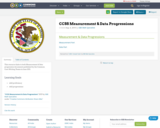
This resource links to both Measurement & Data progression documents published by the Common Core Writing Teams in June 2011.
- Material Type:
- Assessment
- Homework/Assignment
- Teaching/Learning Strategy
- Date Added:
- 05/09/2013

This resource links to both Measurement & Data progression documents published by the Common Core Writing Teams in June 2011.
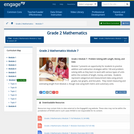
Module 7 presents an opportunity for students to practice addition and subtraction strategies within 100 and problem-solving skills as they learn to work with various types of units within the contexts of length, money, and data. Students represent categorical and measurement data using picture graphs, bar graphs, and line plots. They revisit measuring and estimating length from Module 2, though now using both metric and customary units.
Find the rest of the EngageNY Mathematics resources at https://archive.org/details/engageny-mathematics.
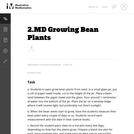
This task adds some rigor to the activity of growing bean plants. By collecting growth data, students practice measuring and recording length measurements.
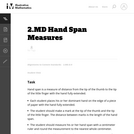
In this activity students measure their hand span. A line graph is used to record the data from the glass.
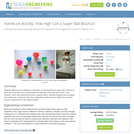
Students determine the coefficient of restitution (or the elasticity) for super balls. Working in pairs, they drop balls from a meter height and determine how high they bounce. They measure, record and repeat the process to gather data to calculate average bounce heights and coefficients of elasticity. Then they extrapolate to determine the height the ball would bounce if dropped from much higher heights.
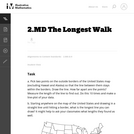
In this task students figure out how to draw the longest line on a map of the United States without hitting a border. They use color and line plots to keep track of their results.

(Nota: Esta es una traducción de un recurso educativo abierto creado por el Departamento de Educación del Estado de Nueva York (NYSED) como parte del proyecto "EngageNY" en 2013. Aunque el recurso real fue traducido por personas, la siguiente descripción se tradujo del inglés original usando Google Translate para ayudar a los usuarios potenciales a decidir si se adapta a sus necesidades y puede contener errores gramaticales o lingüísticos. La descripción original en inglés también se proporciona a continuación.)
El módulo 7 presenta una oportunidad para que los estudiantes practiquen estrategias de adición y sustracción dentro de 100 y habilidades de resolución de problemas a medida que aprenden a trabajar con varios tipos de unidades dentro de los contextos de longitud, dinero y datos. Los estudiantes representan datos categóricos y de medición utilizando gráficos de imágenes, gráficos de barras y parcelas de línea. Revisan la medición y la longitud de estimación del módulo 2, aunque ahora utilizan unidades métricas y habituales.
Encuentre el resto de los recursos matemáticos de Engageny en https://archive.org/details/engageny-mathematics.
English Description:
Module 7 presents an opportunity for students to practice addition and subtraction strategies within 100 and problem-solving skills as they learn to work with various types of units within the contexts of length, money, and data. Students represent categorical and measurement data using picture graphs, bar graphs, and line plots. They revisit measuring and estimating length from Module 2, though now using both metric and customary units.
Find the rest of the EngageNY Mathematics resources at https://archive.org/details/engageny-mathematics.

Embark on an educational adventure through the fascinating world of mathematics with our math-themed nature scavenger hunt lesson plan. Students will explore the outdoors, engaging in activities that integrate mathematical concepts such as shapes, patterns, and measurements found in nature. This interactive experience not only enhances their understanding of math but also cultivates a deeper appreciation for the natural environment. Through hands-on exploration and problem-solving, students will discover the beauty of mathematics all around them, making learning both enriching and enjoyable.
![OREGON MATH STANDARDS (2021): [2.DR]](https://img.oercommons.org/160x134/oercommons/media/courseware/lesson/image/13138_ODE_Math_Logo_2018-H_color_BvjqVNy.png)
The intent of clarifying statements is to provide additional guidance for educators to communicate the intent of the standard to support the future development of curricular resources and assessments aligned to the 2021 math standards. Clarifying statements can be in the form of succinct sentences or paragraphs that attend to one of four types of clarifications: (1) Student Experiences; (2) Examples; (3) Boundaries; and (4) Connection to Math Practices.